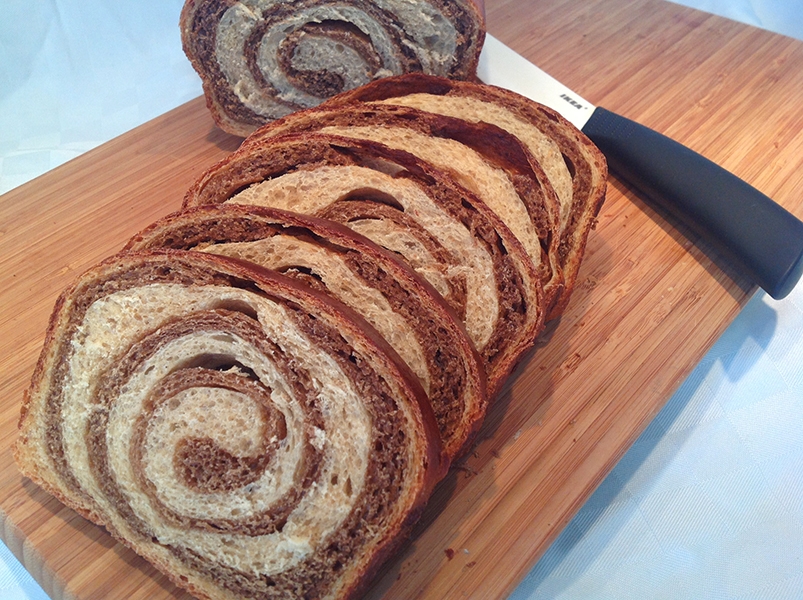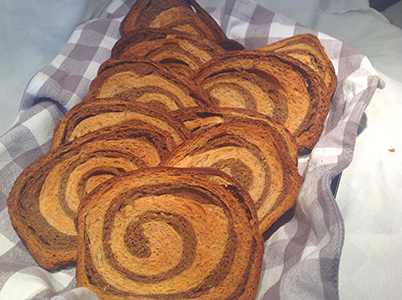Culinary Stories: fette biscottate (twice-baked slices) with Khorasan flour

Welcome to our fourth appointment with our culinary stories.
We’ve talked about the Italian breakfast and snacks, so today we want to talk about the small, square, double-toasted breakfast bread called fette biscottate (twice-baked slices). They’re neither sweet nor savoury and go really well with jams, honey, spreads, but also with creamy cheeses or cold cuts.
They can be found in many varieties, with whole wheat, oatmeal, rye, with cocoa, malt, rice and other types of puffed cereal.
They date back to the 1800s and were actually created by a Prussian Mennonite community in order to avoid waste and have a product that could be kept for long periods of time.
The Mennonites then emigrated to various parts of the world, taking with them their culinary traditions, and these double-toasted or twice-baked bread slices soon became very popular in the world.
From a nutritional point of view, they have more calories than bread because the toasting process makes the water content evaporate, so when compared to the same amount of bread the energy supply is greater.
They are very practical, appetizing and crunchy, and one fetta biscottata is 30 kcals.
They arrived on the Italian breakfast tables in the 70s, along with the slowly spreading use of yogurt, a traditional food from the Balkans.
All this was thanks to the improvement in the economic condition of the people and the increase in their knowledge of foods and related nutritional values.
There were many social changes going on in Italy at that time, and not only regarding food. There was a desire for a return to nature, for a better quality of life and in particular a better family life.
Even TV commercials started showing scenes of happy families sitting around the table enjoying a breakfast together, or in parks doing outdoor activities as a family. The word “light” appeared in the Italian vocabulary, as a way to describe less caloric foods.
The fette biscottate, which up to then had been called biscotti della salute, or health biscuits, became a staple food for breakfast.
The so-called health biscuits were or northern Italian origin and were a type of sweet bread that was traditionally sliced and baked twice in the oven and enriched with butter, eggs, milk, honey and were, therefore, considered healthier.
They were first put on the Italian market during a time of post-war famine so they were considered nutritious, and also a luxury item.
Every baker has his own recipe, but the basic ingredients for fette biscottate is flour, corn, palm or coconut oil, yeast, sugar, malt extract.
Recently they can also be found in many shops made with Khorasan wheat and spelt flour. It’s advisable to always check the ingredients when purchasing these biscuits in order to avoid choosing those made with hydrogenated fats or margarine.
In the 80s, foreign influence and globalization brought to the Italian people a desire to explore new frontiers with food, not neglecting the need to include in the daily diet such healthy products like fibres, bran, oats, muesli, etc., the classic cereals to be eaten accompanied by milk.
We don’t turn our noses up at foreign or packaged products, but we do prefer traditional homemade foods. Here is our recipe for fette biscottate made with barley malt and with Khorasan flour.
Ingredients for fette biscottate twice-baked slices with Khorasan flour
White dough:
230 gr of Khorasan flour
100 ml of water
20 ml of extra virgin olive oil
50 gr of barley malt
2 gr of bread yeast
3 gr of salt
Dark dough:
170 gr of Khorasan flour
75 ml of milk of choice
10 gr of soluble barley
40 gr of barley malt
20 ml of extra virgin olive oil
3 gr of salt
2 gr of bread yeast
 Let’s start with the white dough by putting the flour and yeast in a large bowl. We mix the yeast in 50 ml of warm water and pour it in the flour with the rest of the cold water. We add the oil, the sugar and mix.
Let’s start with the white dough by putting the flour and yeast in a large bowl. We mix the yeast in 50 ml of warm water and pour it in the flour with the rest of the cold water. We add the oil, the sugar and mix.
After that we add the salt. We let it rise in the bowl covered with plastic wrap while we prepare the dark dough by mixing the sifted flour with the yeast, then adding the warm milk in which we previously mixed the soluble barley and barley malt.
After mixing everything well, we add the oil and salt, then we mix it all and leave it to rise in the bowl covered with plastic wrap. When both doughs have risen, we grease a rectangular bread loaf pan.
We place both doughs next to each other and flatten them out shaping them into rectangles. We then lay one on top of the other, making one side the same size as our baking pan.
We roll them together and leave this to rise in the pan until it has doubled in size, then we brush the top with a bit of milk and bake at 180° for about 30 minutes.
Once it is done, we leave it to cool for about 24 hours then we cut it into slices which we then bake at 140° for 15-20 minutes. It sounds complicated but it really isn’t... and it’s such a satisfaction when you bite into these crunchy yummy toasted slices!
(Foto e English translation di Tina Ferraiuolo & Cristiana Ordioni)
Articolo in italiano Storie Culinarie: le fette biscottate di Kamut.